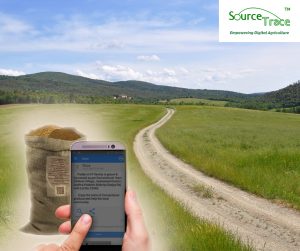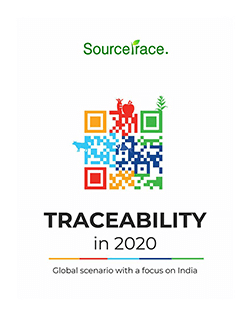No Compromises here: Ensuring Food Safety through Traceability

Incidences of the breach of food safety come to the fore off and on, and one of the instances etched in our minds is perhaps when Maggi was recalled from the shelves of Indian stores as it tested positive for lead. While the company lost a lot of revenue, this crisis marked one of the highest profile cases for India’s food safety sector. Such incidents are reported in many countries, more so in the developing countries, as food safety as a norm or a process, is still evolving. As food production and distribution systems become more interdependent, integrated and globalized, technological innovation needs to keep up too. From the consumer’s side, the consumer often doesn’t know or care about the origin of the produce. Neither do eateries bother to certify the products that they procure. While the truth is that food can transmit pathogens that can cause illness or death due to the adverse effects of bacteria, fungi, and mold, in reality, food poisoning is 100 percent preventable. However, this can be achieved only if there is strict monitoring across all levels from the place of production to the point of retail.
What is food safety?
Food safety refers to the handling, preparing and storing food in a way as to best reduce the risk of people falling sick with food-borne diseases. An entire chain of this exists from the industry to the market and then from market to consumer. Currently, very few organizations are taking measures to provide transparency in food supply systems. Very often, entire consignments of produce get rejected due to lack of adherence to norms, as the producer had not taken the trouble to get them properly certified. These include cases of in which antibiotics have been used in poultry and dairy farms; or banned chemicals in agricultural produce. Aquaculture products also face the same issue of the need for certification. Also, without proper tracking and cold storage facilities, the produce can get spoilt. Therefore, having a tracking system helps to recall the produce that is past the expiry date. This is relevant especially for canned, bottled food, and also fish and meat produce.
Consumers who pay a high price for the food they consume have a right to know where the food comes from.
Traceability is the answer
The answer to ensuring food safety is possible through applying the system of traceability. Traceability is the process of accounting for every step in the life-cycle of a product, from raw material to finished good. Like monitoring and evaluation, traceability relies on continuous data capture from every stage of the product’s transformation and delivery. This process enables the verification of trading partners and providing continuous assurance that products are authentic, safe and effective. Industries such as pharmaceuticals and agricultural produce use batch-level traceability to streamline the identification and recall of potentially harmful products. Thus it is traceability that provides customers with ultimate confidence that they are receiving an authentic product that is consistently delivered on time.
Technology for Traceability Solutions
Prior to the advent of cloud-based social networks, traceability was only possible through dedicated hardware installed at manufacturing locations. Today, mobile social networks are available. It is possible to capture each step in the life of a product via smartphone and upload the results to an online data warehouse where the steps are automatically compiled into an end-to-end record of traceability. As an added benefit, traceability via smartphones automatically captures the location and time of each step in the supply chain and automatically delivers it to the multi-tier supply chain map.
Some of the latest applications of traceability are available for seafood as well as livestock sectors.
Moving Ahead with the Concept of Traceability
Traceability is becoming an important part of public and private systems for monitoring and compliance with quality, environmental and other standards. Small producers, who can’t afford the huge capital investment, are as much in the web. The traceability tools that are required are the mobile wireless, while the nanotechnology revolution offers the potential to change all that as remote producers and smallholders gain access to ICTs. Mobile phones, DNA techniques, Nuclear techniques, Barcode, Radio Frequency Identification (RFID) systems, wireless sensor networks and global positioning systems (GPS) are all used for traceability solutions.
SourceTrace’s Traceability Solution
Source Trace’s traceability solution provides full visibility of the agricultural value chain. Its technology platform leverages existing wireless data networks to allow companies to capture transactional information at the source even in remote locations with minimal or no telecommunications infrastructure.
SourceTrace QR code-based solution helps to track the produce from the field to the customer.
Even without the internet, the customer can locate the farmer and field before buying the produce.
The system helps generate a trust factor among the customers and inculcates transparency in the supply chain of the produce. SourceTrace traceability solution is simple, yet effective, and it assists organizations which are committed towards food safety in the value chain.
SourceTrace systems also help farmers get a higher price in the market, thereby increasing the value of the produce. It helps farmers with market linkage, as international buyers can locate the source of the produce. Farmers who are part of this value chain are also benefited because they are able to market their produce to international markets through the organization that is associated with them. In the case of poultry and piggery, for example, the animals/ birds are tagged by using a QR code, their movement is thus tracked from the poultry farm until the retail outlet. Geo-tagging is done right from the time of hatching of the chicks. Once it reaches the retail outlet, the QR code can be scanned to determine the place of origin.
While these are the nitti-gritties of the traceability solution, its impact on the food retail system cannot be underestimated.
Such a traceability-based certification process helps generate more trust, authenticity, and transparency in the systems and for the end consumer.
SourceTrace's software solutions have been deployed across 37 countries and 4 continents already. We are on a mission to make agriculture and food systems more sustainable. Get in touch and we will extend our expertise and commitment to you.
Request a Demo


